#compliance
Text
youtube
Compliance | A Doctor Who short film by 3ddoctorwho
From the creator:
All is not what it seems in this bleak, brutalist Dalek city...
Here it is (in 4K too!) Perhaps one of the weirdest things I've ever made, Compliance is the product of my wildest dreams mixed with my love of Daleks. Enjoy!




66 notes
·
View notes
Text
If I had the resources I'd make an earnest commercial/music video for OSHA using the song Compliance from Muse and just play it straight during any questioning.
"compliance!" the man in the safety hat says, his face worn down from worry and experience. "We just need your compliance" he begs.
86 notes
·
View notes
Text
👩🏼⚕️💉👨🏽⚕️
#coronavirus#opening ceremony of the 2012 olimpics#predictive programming#organised crimes#organised scandemic#planned confinements#restrictions#compliance#dirty politics#one world order#you will own nothing#rent everything and be happy#the deep state’s plan to destroy life on eart#enslaving humanity#crimes against humanity#these people are evil#speaktruth#fight for justice#standup#speak up#truth#please share#wwg1wga
13 notes
·
View notes
Text
Nos llena de mucho orgullo saber que hemos impactado para bien la vida de tantas personas ❤️

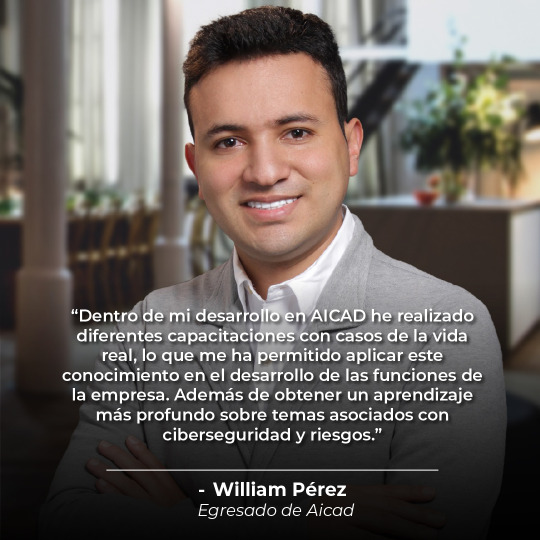
Ya son más de 100.000 líderes formados en nuestra Escuela de Negocios. Más de 100.000 historias de superación y éxito profesional.
Nos encanta formar a los líderes que están transformando nuestra sociedad.
En Aicad Business School seguimos comprometidos con hacer del mundo, un lugar mucho mejor.
#aicad#educacion#education#crecimientopersonal#desarrollopersonal#ciberseguridad#projectmanagement#inteligenciaartificial#compliance#marketing#big data
11 notes
·
View notes
Text
Thinking back on it, my favourite part of seeing Will of the People in Dublin is when everyone started clapping along with Matt to compliance. Like we all would join a cult for muse. 100%
#muse#muse band#will of the people#will of the people tour#compliance#matt bellamy#dom howard#chris wolstenholme
14 notes
·
View notes
Text
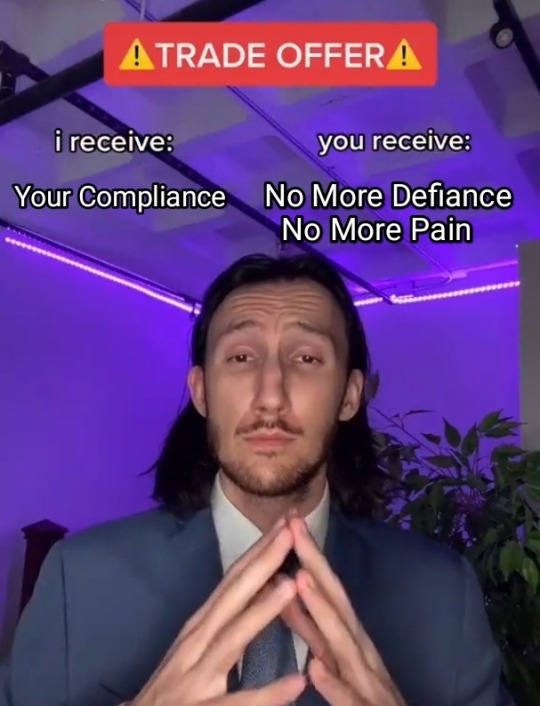

Has this been done yet ???
#muse#matt bellamy#musers#museband#muse band#muser#will of the people#muse new album#muse meme#muse memes#chris wolstenholme#dom howard#compliance#muse compliance
209 notes
·
View notes
Text
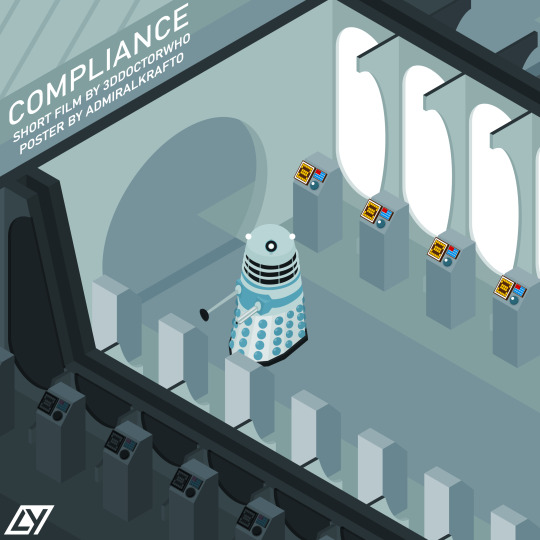
#doctor who#doctor who fanart#daleks#dalek#compliance#3ddoctorwho#vector#vector art#lineless art#inkscape#my art#art of krafto
22 notes
·
View notes
Photo




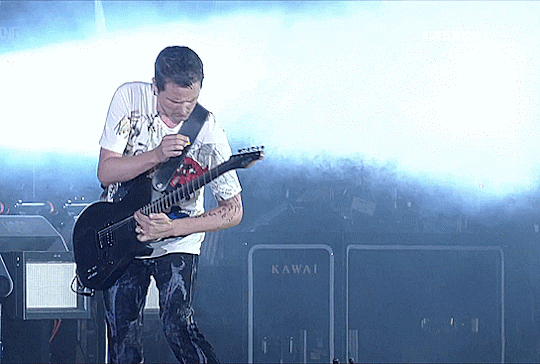
#muse#muse band#matt bellamy#matthew bellamy#matthew james bellamy#nishe#psycho#compliance#foxy lady riff#god he looks so fucking good
158 notes
·
View notes
Text




30.03.2024 - São Paulo / Brazil
Buzy @ work, trying to eat healhy, avoiding drinking too much coffee and finishing my Compliance&AntiCorruption lecture.
I love autummn sunsets. Its the most beaultiful skies in the year.
Tomorrow's Easter holiday
#sunset#study motivation#studyinspo#law student#studygram#studyblr brazil#studyspo#compliance#adult work#healthyfood#easter
4 notes
·
View notes
Text
Do not underestimate the psychological impact of compliance. Gender charades groom girls and women to disregard their innate protective instincts.
28 notes
·
View notes
Text
Compliance, per the two main approaches to medical sociology
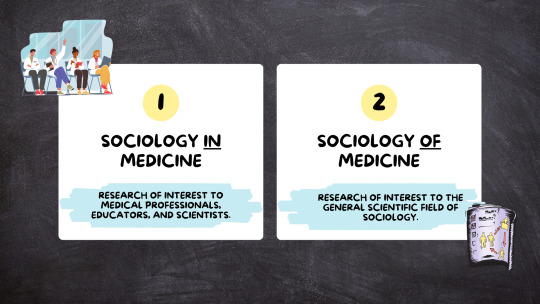
Sociology in medicine is research that’s of interest to medical professionals, medical educators, medical scientists— things that are important to medicine as an institution.
Sociology of medicine tends to be research of interest to the general scientific field of sociology, not only sociologists who study matters of medicine, health, illness, healthcare, and disability. Importantly, it is not that medicine is simply disinterested in sociology of medicine, the institution of medicine sometimes has a vested interest in silencing or arguing against sociology of medicine. Sociology of medicine may not be useful to medical professionals, but if, for example, sociology of medicine is critiquing medical practice, as is often the case, it might move beyond useless to being perceived as offensive.
To further explore the difference between sociology in versus of medicine, let’s take the issue of compliance.

From the medical perspective, patient compliance is vital for successful medical practice and treatment. if your patient is not listening to you–for example, if they’re not taking their medication, and that medication is supposed to get them better, than you are going to have a much more difficult time treating that patient, and thus, a much harder time doing your job, than if the patient “complied” with your treatment plan. Same thing if your patient won’t have surgery. Well, if operating is the way that you do your job and the patient refuses, you cannot do your job as well. So, sociology in medicine would examine compliance with this medical perspective in mind. Sociology in medicine might investigate the barriers to patient compliance, and they might ask about these barriers in terms of patient behavior, asking something like "why are these patients non-compliant?" with the goal of identifying things that can be addressed to help patients better comply, so that medical professionals can have better chances of success when trying to do their jobs.
Now, moving to sociology of medicine—the greater field of sociology is interested in issues of power and inequality. When examining compliance in terms of power and inequality, we might look at something like physician control over patients, which would contribute to areas of sociology beyond medical sociology, such as the larger sociological literature on deviance and social control.
From this perspective, physicians offer something that patients cannot obtain on their own—prescription medications, surgery, imaging…these are all things that are considered both illegal and dangerous when obtained from non-credentialed entities. This means patients must be compliant to avoid severe consequences, like physical injury, disability, or even death. Healthcare providers hold power to help people feel better when they have few, if any, safe alternatives.
Instead of looking at compliance as inherently positive or necessary, we can critique the concept, and most importantly, the continued endorsement of compliance as “positive” and “necessary” by credentialed actors in medicine. So, sociology of medicine, similarly to sociology in medicine, may examine barriers to compliance, but because it does not assume compliance is necessary or helpful to the patient, it leaves room to explore the patient experience. Sociology of medicine can explore things like mistrust of medical professionals, experiences with bias and discrimination in the clinical encounter, and the patient’s understanding of a potential treatment as helpful versus their belief that the treatment is useless (independent of the science on said treatment’s effectiveness).
So, while sociology in medicine and sociology of medicine might both be interested in the question of “why do patients become noncompliant,” sociology in medicine might approach that question with the intent of identifying something that will lead to increased compliance, whereas sociology of medicine may approach the question in terms of medical harm, so not taking the assumption that compliance is positive, instead, taking the more skeptical view that compliance might be an exercise of power on the part of the healthcare provider over the patient and focusing on issues like the potential for patterns of exploitation and/or harm of certain groups of patients with shared characteristics. Sociology of medicine might ask whether healthcare providers, because they are powerful, are inherently good or right. Sociology in medicine would probably not ask this question at all, instead assuming the answer to be "yes"
youtube
#sociology#studyblr#phdblr#social science#medblr#health science#research#paradigm#medical sociology#sociology of medicine#sociology in medicine#compliance#power#inequality#deviance#social control#medical sociology 101#Youtube
3 notes
·
View notes
Text
Q&A: Claire Walsh on how J-PAL’s King Climate Action Initiative tackles the twin climate and poverty crises
New Post has been published on https://thedigitalinsider.com/qa-claire-walsh-on-how-j-pals-king-climate-action-initiative-tackles-the-twin-climate-and-poverty-crises/
Q&A: Claire Walsh on how J-PAL’s King Climate Action Initiative tackles the twin climate and poverty crises


The King Climate Action Initiative (K-CAI) is the flagship climate change program of the Abdul Latif Jameel Poverty Action Lab (J-PAL), which innovates, tests, and scales solutions at the nexus of climate change and poverty alleviation, together with policy partners worldwide.
Claire Walsh is the associate director of policy at J-PAL Global at MIT. She is also the project director of K-CAI. Here, Walsh talks about the work of K-CAI since its launch in 2020, and describes the ways its projects are making a difference. This is part of an ongoing series exploring how the MIT School of Humanities, Arts, and Social Sciences is addressing the climate crisis.
Q: According to the King Climate Action Initiative (K-CAI), any attempt to address poverty effectively must also simultaneously address climate change. Why is that?
A: Climate change will disproportionately harm people in poverty, particularly in low- and middle-income countries, because they tend to live in places that are more exposed to climate risk. These are nations in sub-Saharan Africa and South and Southeast Asia where low-income communities rely heavily on agriculture for their livelihoods, so extreme weather — heat, droughts, and flooding — can be devastating for people’s jobs and food security. In fact, the World Bank estimates that up to 130 million more people may be pushed into poverty by climate change by 2030.
This is unjust because these countries have historically emitted the least; their people didn’t cause the climate crisis. At the same time, they are trying to improve their economies and improve people’s welfare, so their energy demands are increasing, and they are emitting more. But they don’t have the same resources as wealthy nations for mitigation or adaptation, and many developing countries understandably don’t feel eager to put solving a problem they didn’t create at the top of their priority list. This makes finding paths forward to cutting emissions on a global scale politically challenging.
For these reasons, the problems of enhancing the well-being of people experiencing poverty, addressing inequality, and reducing pollution and greenhouse gases are inextricably linked.
Q: So how does K-CAI tackle this hybrid challenge?
A: Our initiative is pretty unique. We are a competitive, policy-based research and development fund that focuses on innovating, testing, and scaling solutions. We support researchers from MIT and other universities, and their collaborators, who are actually implementing programs, whether NGOs [nongovernmental organizations], government, or the private sector. We fund pilots of small-scale ideas in a real-world setting to determine if they hold promise, followed by larger randomized, controlled trials of promising solutions in climate change mitigation, adaptation, pollution reduction, and energy access. Our goal is to determine, through rigorous research, if these solutions are actually working — for example, in cutting emissions or protecting forests or helping vulnerable communities adapt to climate change. And finally, we offer path-to-scale grants which enable governments and NGOs to expand access to programs that have been tested and have strong evidence of impact.
We think this model is really powerful. Since we launched in 2020, we have built a portfolio of over 30 randomized evaluations and 13 scaling projects in more than 35 countries. And to date, these projects have informed the scale ups of evidence-based climate policies that have reached over 15 million people.
Q: It seems like K-CAI is advancing a kind of policy science, demanding proof of a program’s capacity to deliver results at each stage.
A: This is one of the factors that drew me to J-PAL back in 2012. I majored in anthropology and studied abroad in Uganda. From those experiences I became very passionate about pursuing a career focused on poverty reduction. To me, it is unfair that in a world full of so much wealth and so much opportunity there exists so much extreme poverty. I wanted to dedicate my career to that, but I’m also a very detail-oriented nerd who really cares about whether a program that claims to be doing something for people is accomplishing what it claims.
It’s been really rewarding to see demand from governments and NGOs for evidence-informed policymaking grow over my 12 years at J-PAL. This policy science approach holds exciting promise to help transform public policy and climate policy in the coming decades.
Q: Can you point to K-CAI-funded projects that meet this high bar and are now making a significant impact?
A: Several examples jump to mind. In the state of Gujarat, India, pollution regulators are trying to cut particulate matter air pollution, which is devastating to human health. The region is home to many major industries whose emissions negatively affect most of the state’s 70 million residents.
We partnered with state pollution regulators — kind of a regional EPA [Environmental Protection Agency] — to test an emissions trading scheme that is used widely in the U.S. and Europe but not in low- and middle-income countries. The government monitors pollution levels using technology installed at factories that sends data in real time, so the regulator knows exactly what their emissions look like. The regulator sets a cap on the overall level of pollution, allocates permits to pollute, and industries can trade emissions permits.
In 2019, researchers in the J-PAL network conducted the world’s first randomized, controlled trial of this emissions trading scheme and found that it cut pollution by 20 to 30 percent — a surprising reduction. It also reduced firms’ costs, on average, because the costs of compliance went down. The state government was eager to scale up the pilot, and in the past two years, two other cities, including Ahmedabad, the biggest city in the state, have adopted the concept.
We are also supporting a project in Niger, whose economy is hugely dependent on rain-fed agriculture but with climate change is experiencing rapid desertification. Researchers in the J-PAL network have been testing training farmers in a simple, inexpensive rainwater harvesting technique, where farmers dig a half-moon-shaped hole called a demi-lune right before the rainy season. This demi-lune feeds crops that are grown directly on top of it, and helps return land that resembled flat desert to arable production.
Researchers found that training farmers in this simple technology increased adoption from 4 percent to 94 percent and that demi-lunes increased agricultural output and revenue for farmers from the first year. K-CAI is funding a path-to-scale grant so local implementers can teach this technique to over 8,000 farmers and build a more cost-effective program model. If this takes hold, the team will work with local partners to scale the training to other relevant regions of the country and potentially other countries in the Sahel.
One final example that we are really proud of, because we first funded it as a pilot and now it’s in the path to scale phase: We supported a team of researchers working with partners in Bangladesh trying to reduce carbon emissions and other pollution from brick manufacturing, an industry that generates 17 percent of the country’s carbon emissions. The scale of manufacturing is so great that at some times of year, Dhaka (the capital of Bangladesh) looks like Mordor.
Workers form these bricks and stack hundreds of thousands of them, which they then fire by burning coal. A team of local researchers and collaborators from our J-PAL network found that you can reduce the amount of coal needed for the kilns by making some low-cost changes to the manufacturing process, including stacking the bricks in a way that increases airflow in the kiln and feeding the coal fires more frequently in smaller rather than larger batches.
In the randomized, controlled trial K-CAI supported, researchers found that this cut carbon and pollution emissions significantly, and now the government has invited the team to train 1,000 brick manufacturers in Dhaka in these techniques.
Q: These are all fascinating and powerful instances of implementing ideas that address a range of problems in different parts of the world. But can K-CAI go big enough and fast enough to take a real bite out of the twin poverty and climate crisis?
A: We’re not trying to find silver bullets. We are trying to build a large playbook of real solutions that work to solve specific problems in specific contexts. As you build those up in the hundreds, you have a deep bench of effective approaches to solve problems that can add up in a meaningful way. And because J-PAL works with governments and NGOs that have the capacity to take the research into action, since 2003, over 600 million people around the world have been reached by policies and programs that are informed by evidence that J-PAL-affiliated researchers produced. While global challenges seem daunting, J-PAL has shown that in 20 years we can achieve a great deal, and there is huge potential for future impact.
But unfortunately, globally, there is an underinvestment in policy innovation to combat climate change that may generate quicker, lower-cost returns at a large scale — especially in policies that determine which technologies get adopted or commercialized. For example, a lot of the huge fall in prices of renewable energy was enabled by early European government investments in solar and wind, and then continuing support for innovation in renewable energy.
That’s why I think social sciences have so much to offer in the fight against climate change and poverty; we are working where technology meets policy and where technology meets real people, which often determines their success or failure. The world should be investing in policy, economic, and social innovation just as much as it is investing in technological innovation.
Q: Do you need to be an optimist in your job?
A: I am half-optimist, half-pragmatist. I have no control over the climate change outcome for the world. And regardless of whether we can successfully avoid most of the potential damages of climate change, when I look back, I’m going to ask myself, “Did I fight or not?” The only choice I have is whether or not I fought, and I want to be a fighter.
#000#Abdul Latif Jameel Poverty Action Lab (J-PAL)#Africa#agriculture#air#air pollution#Anthropology#approach#Arts#Asia#biggest city#carbon#carbon emissions#career#challenge#change#cities#Cleaner industry#climate#climate change#climate crisis#coal#Collaboration#compliance#crops#cutting#data#deal#Developing countries#development
2 notes
·
View notes
Text
I went live during the gig tonight and this was one of my favorite parts
#I’m such a sucker for confetti what can I say!???#muse#compliance#muse at minneapolis target center
28 notes
·
View notes
Note
HEY UM. BESTIE?
...WHAT ARE YOU DOING
- Light @sleepy-hisui
Cleaning. You said the room was a mess.
12 notes
·
View notes
Text
this is completely THEIR SONG pls listen to it
🟠🟡🟢
youtube
please i need the dark sides to come back soon
i…i miss them? little chaotic jerks. who even am i?
i do. i miss them. a lot.

#Janus sanders#Remus sanders#orange sides#muse#compliance#it’s their song#thomas sanders#sanders sides#Youtube
24 notes
·
View notes